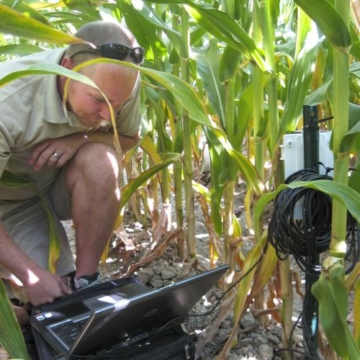Explore our blog featuring articles about farming and irrigation tips and tricks!
Thirsty Crops Run A Temp

By: Dave Mowitz
Kendall DeJonge’s mission is to take plants’ temperatures. But the crops, like corn, that he’s working with don’t have to open up and say, “ahh.” Instead, DeJonge employs an infrared radiometric thermometer (IRT). It is a simple point-and-detect temperature detection tool that you can own.
The USDA Agriculture Research Service (ARS) engineer is refining a simple way you can use IRT readings to pinpoint when a crop needs to be irrigated.
CREATING A SIMPLE CALCULATION
DeJonge is basing his work on research that confirms thirsty plants get hot. So a simple method of taking crop canopy temperatures could be a boon to farmers. Also, DeJonge points out, IRTs could be placed on posts in fields, center pivot irrigation systems, or even on a drone to gather temperature readings on crops.
Scientists can interpret the IRT readings by using one of several indicators, including the commonly used crop water stress index (CWSI).
Developed by ARS scientists in the early 1980s, the CWSI requires knowing air temperatures and humidity levels in addition to crop canopy temperature to calculate a vapor pressure deficit. Although accurate, CWSI is fairly technical to use.
Stay up to date on all T-L news and get alerts on special pricing!


